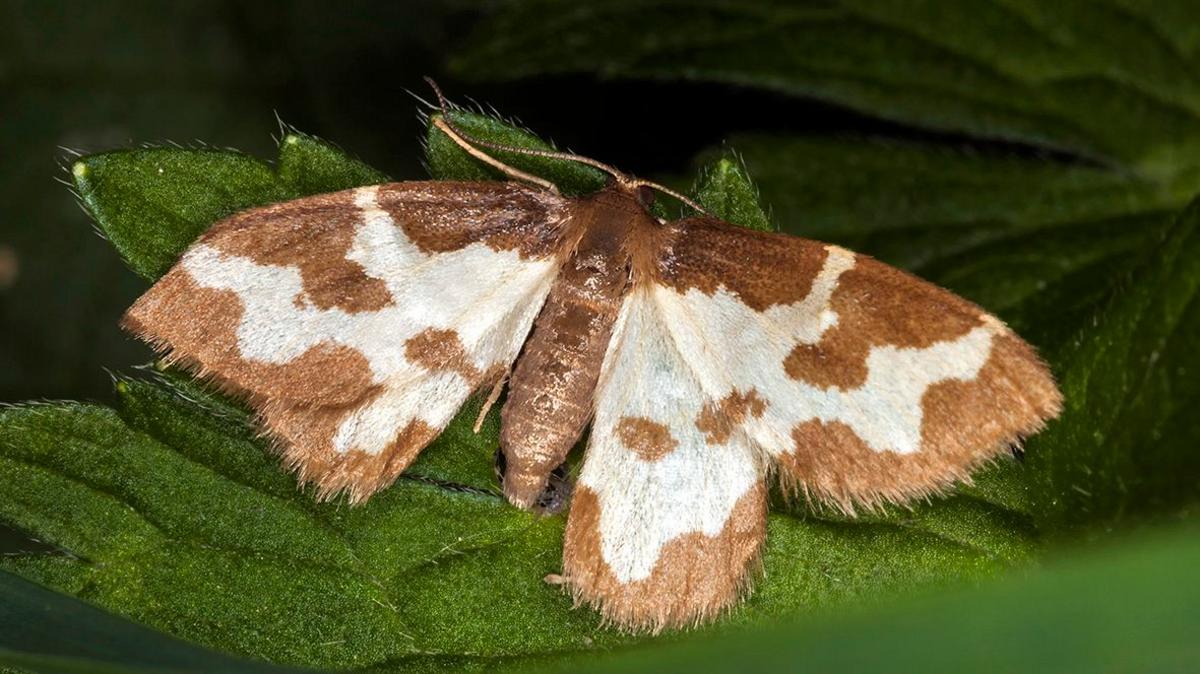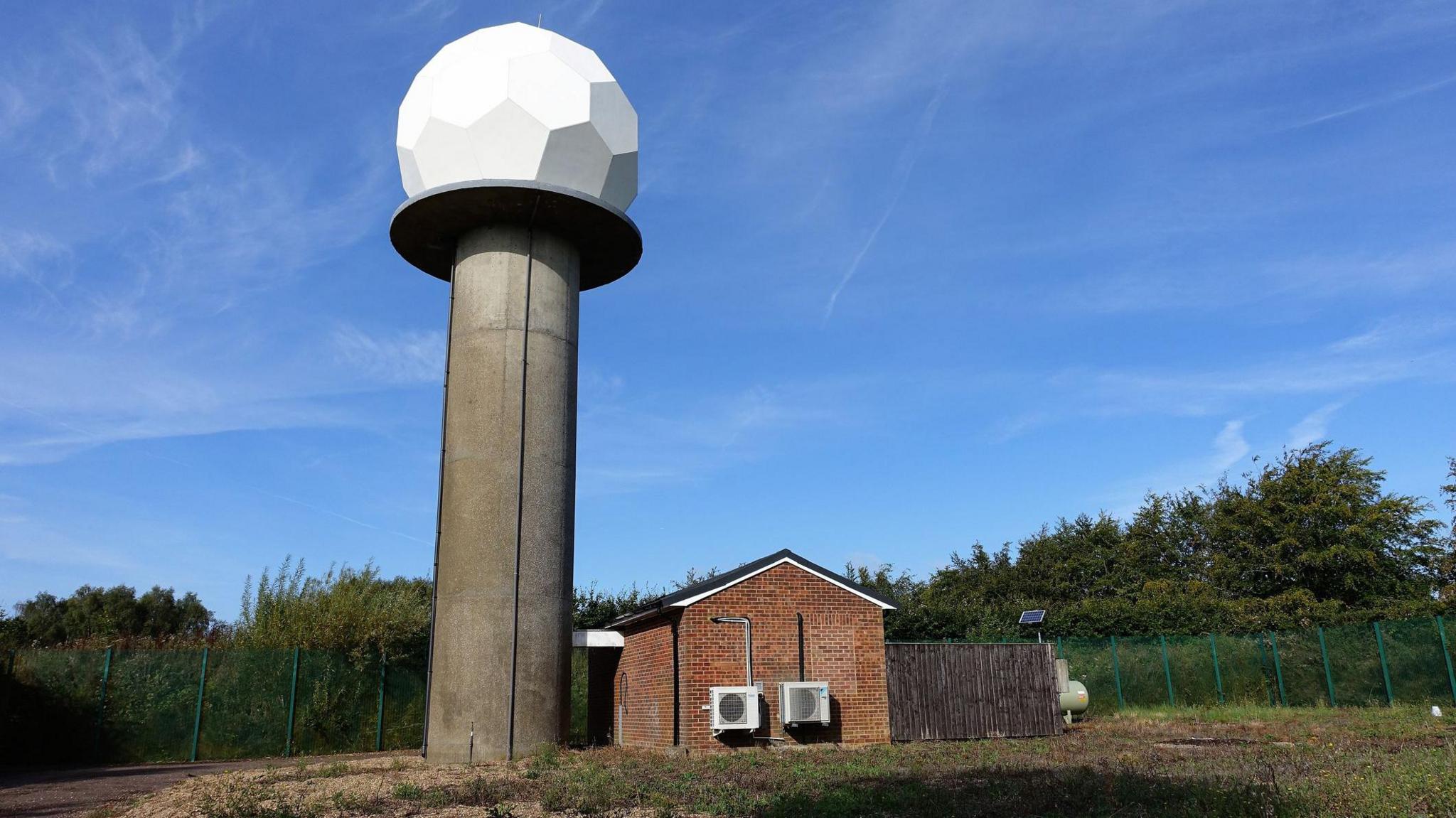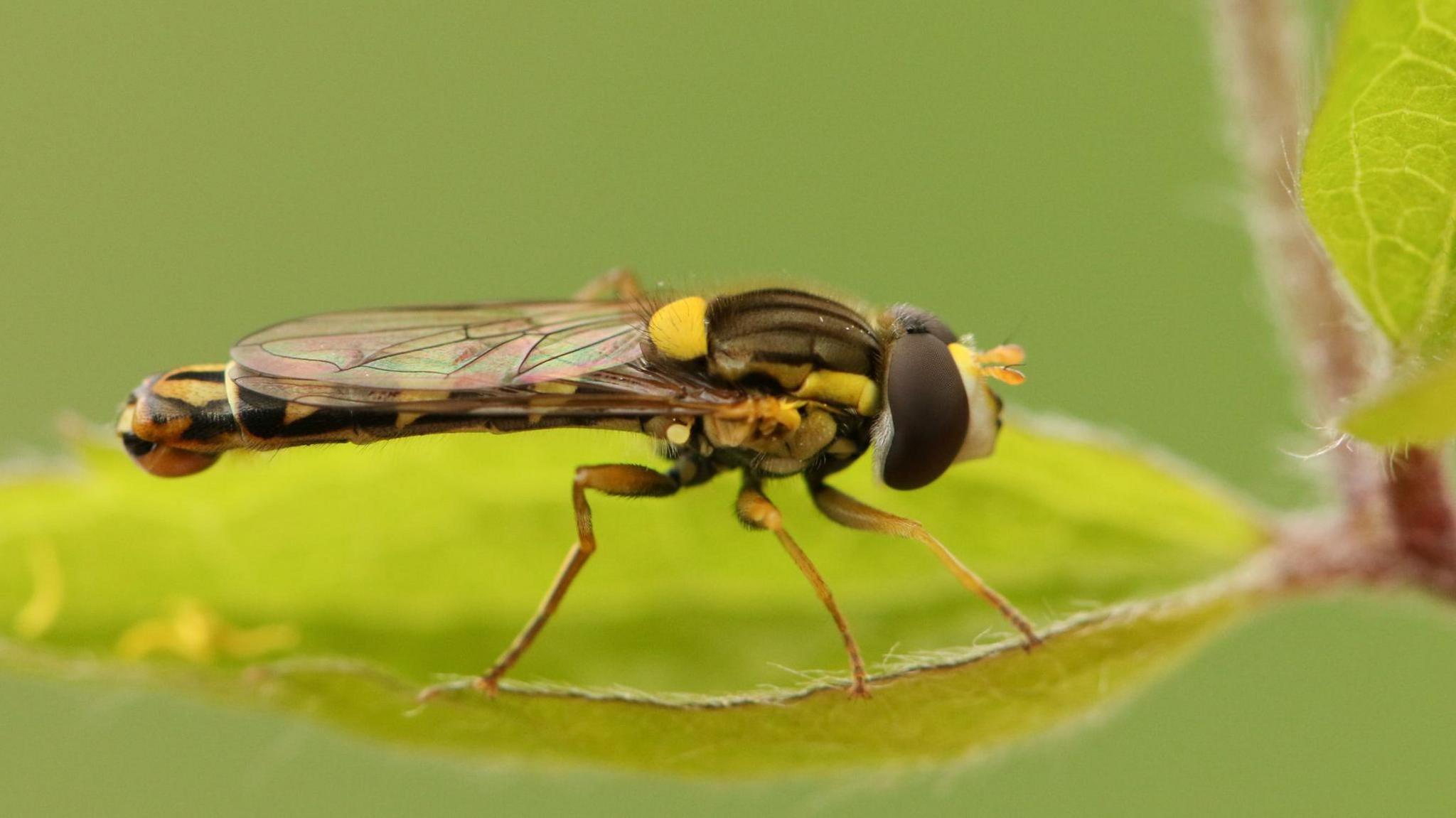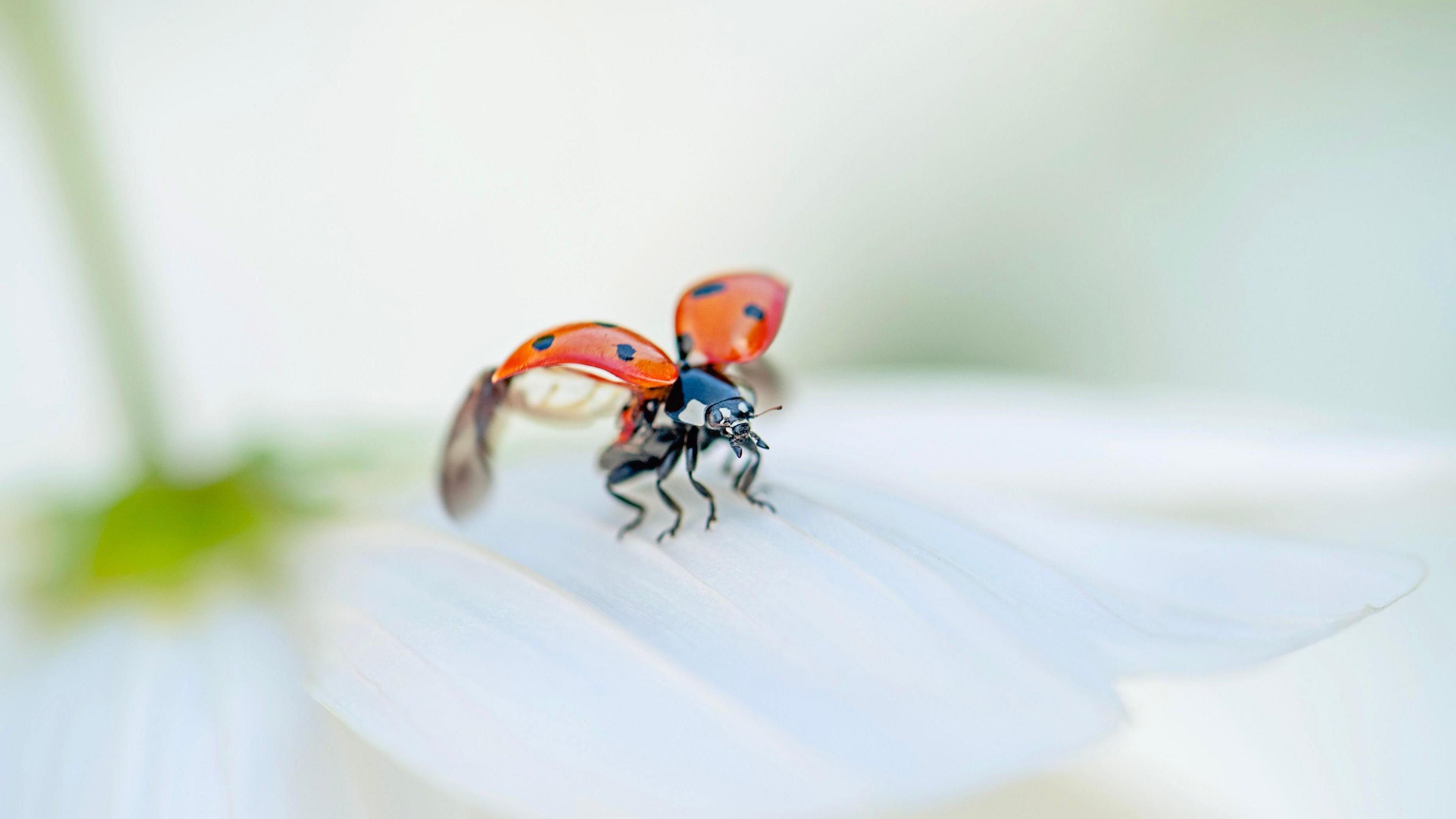Numbers of nocturnal insects have gone down, weather data shows

Clouded border moth
- Published
Scientists have found that while the numbers of day insects have remained stable, the number of nocturnal insects (active at night) such as moths have declined.
Using weather radar which is usually used to track things like rainfall, scientists were able to monitor the movements and numbers of insects.
The new study also seemed to show a link with the decline and the amount of light pollution.
The researchers say it is one of the first studies to show how day and night-flying insects are being affected differently.
Why do moths flutter around your bedroom light?
- Published1 February 2024
Butterflies and moths are 'picky eaters' during the day
- Published4 April
Street lights can make leaves too tough for insects, says study
- Published5 August 2024
What is weather radar?

A weather radar in England with a golf-ball shaped radome on top, which protects the radar antenna
Weather radar is described by the Met Office as one of their most powerful tools for "observing and forecasting the UK's ever-changing weather".
Radar works by giving out electromagnetic beams that travel through the atmosphere.
When these beams come across small particles, such as raindrops, they are reflected back to the radar receiver.
The Met Office collects data from a network of radar stations which are positioned across the UK.
Although they are built to monitor the weather, the radar can also pick up insects.
Back in July a swarm of flying ants was captured, at first being mistaken for showers.
What were the findings?

Insects like this hoverfly pollinate crops
The study, published in the journal Global Change Biology, looked at data gathered by the UK's network of radar stations.
It found that while daytime insect numbers have remained quite stable or even increased in some areas in the south, night time-airborne insects have gone down overall - especially in the far north.
The study also said that artificial light at night, already known to disrupt insect behaviour, may be contributing to their decline.
Areas with more light pollution showed lower night-time and day-time insect activity.
There were also more insects in landscapes dominated by woodland and even in some cities, but fewer insects on farmland where there was more artificial light.
Lead author Dr Mansi Mungee said: "This is one of the first studies to show how day and night-flying insects are being affected differently, and how their habitats influence those patterns.
It's a crucial step toward understanding where to focus conservation efforts."

A ladybird about to take flight
Insects pollinate crops, break down waste, and are vital food for birds, bats, and other wildlife.
The researchers say changes in their numbers can have a huge effect on ecosystems.
Co-author Dr Christopher Hassall said the study shows how landscape management can affect numbers and also how weather data can be used in future.
"Our findings are just a tantalising glimpse of what weather radar data can reveal for ecologists," he said.
